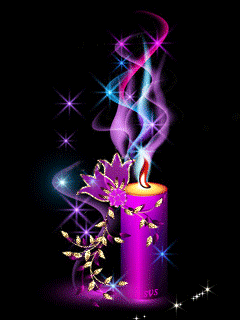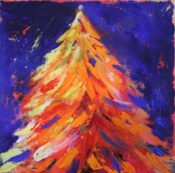Alphabet
A Simple Runecasting Method
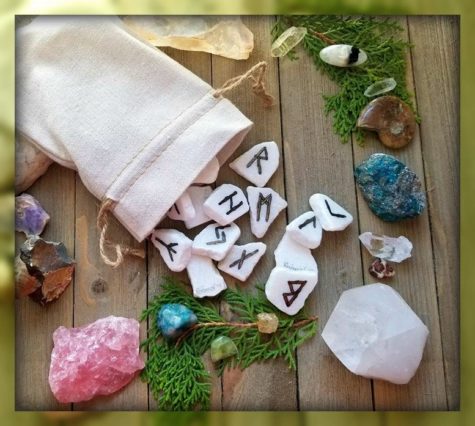
Find a suitable place to do the reading. You do not want to be disturbed. Try to sit facing North if possible, the direction of the Gods in Norse mythology. Place a small white cloth on the surface in front of you. You work with the runes on this cloth. This cloth protects them from getting dirty and also forms the boundary for the casting.
Carefully form a question in your mind. Take your time doing this, as it is very important that you do not change the question midway through the reading. Once you have the question firmly fixed in your mind begin to gently mix the runes in their bag or container. Continue to mix the runes until you feel compelled to take up a small handful.
Cast them onto a white cloth, and see how the symbols land. Some will be face down – ignore them. If a rune is upright, it has a certain meaning. If a rune is upside down, it has a different meaning. The combination of the visible runes affects the interpretation. Sometimes the runes might “sing” to you and the answer to the question is instantly clear. Other times, not so much.
Runes are oracles, and oracles are often obscure. Each rune can mean many different things. It is up to the runecaster to decide how these meanings apply to the question at hand. You may get even deeper interpretations through your own “gut” reactions to the rune’s definition. However, don’t delude yourself in thinking that you have a completely different understanding of the cast than indicated by the traditional interpretations. Stick to the recognized interpretations, but learn to expand on their meanings through insight and meditation.
A short summary of the meanings and interpretations of each Rune stone can be found here. A nice tutorial on creating your own set of Rune Stones can be found at the Magickal Apothecary.
Source: Sunnyway
Rune Casting
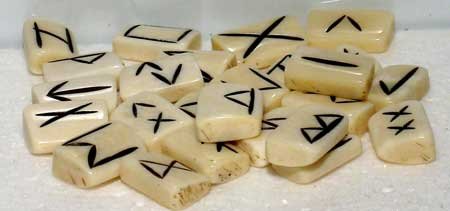
Rune Stones usually come in a set of 24 ancient alphabetic symbols, along with a book of instructions defining the symbols. They can be made of different materials – wood or glass are the most common – and usually kept in a pouch or box.
There are many versions of the Runic alphabets. Each has variations in names, shapes, esoteric meanings and magical uses. One should not mix futharks, if you do, the intent or meaning becomes confused. The Elder Futhark, the Anglo-Saxon Futhorc, and the Younger (or Scandinavian) Futhark are the most frequently seen versions of the Runic alphabets in use today.
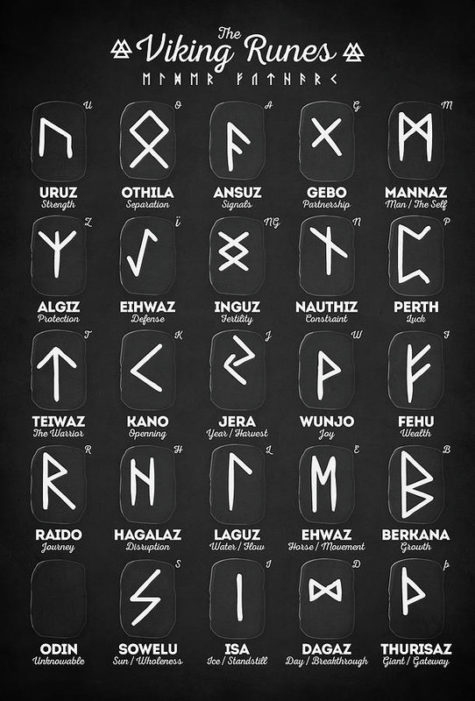
The Runes are broken into three sections or groups of eight, called aett (aettir, plural). This helps one to remember their order, and may have significance in magickal uses.
Ideally Runes are cast on an East-West axis or facing the sun. A white cloth is laid down and used to determine the direction of the casting. From here the focus should lie with the pressing question.
After casting the stones onto the cloth the ones which have fallen the right side up are read and depending upon whether the Rune is reversed or not will have a bearing on its meaning and the reading as a whole.
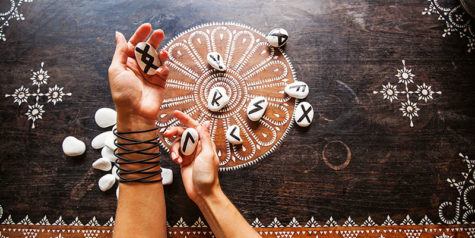
An alternative to casting the Rune stones …
Pick a Rune stone randomly for a day reading; you can also do what is known as a 3 Rune spread. Some feel that the day Rune is a good way to get an answer to a single question. The 3 Rune Spread is used for asking broader questions whereas the single Rune can be drawn on a daily basis.
- Note: The “traditional meanings of Runes should not be regarded as absolute. They are helpful indications to layers of meaning – nothing more.
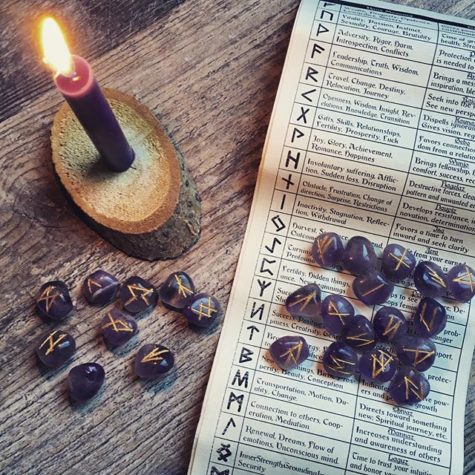
Runic divination, “runecasting”, is not “fortune telling”. Runecasting works deeply with the subconscious. The rune pouch with its runic symbols represents the entire universe. As one poses a question, one’s entire conscious and unconscious mind is focused toward that question, so that the runelots selected are not truly random selections, but rather choices made by the subconscious.
Runecraft operates on an ancient form of psychology. Even back in Viking times, there was a remarkable understanding of the human psyche. They recognized cause and effect, and the interconnectedness of all things. The word to describe this interconnectedness was “wyrd”, which was eventually perverted into the modern meaning of “weird”. It did not originally mean something unusual or strange. Rather, it referred to the far-reaching effects of that which one does.
The concept of “fate” was also not as we know it now. Instead of a helpless predestination, “fate” meant a destiny created by one’s earlier actions. Wyrd was pictured as a web, like that of a spider. The symbology is excellent. When the spider steps onto a thread (a path) the vibrations affect the entire web and that which is contained within the web, just as our actions affect our immediate world and those around us, and the actions of others affect our lives.
When one does a runic reading, one usually addresses a particular issue, and examines the past, the present and the “future”, or rather “what will be if one follows the path one appears to be on”. The future is always perceived as mutable, changeable. The runic reading is done as an evaluation process, not as fortunetelling. One has an opportunity to look at what has occurred in the past (regarding the issue being questioned), what is occurring right now, and what direction one is headed.
A runecaster does not see the future. He/she examines cause and effect and points out a likely outcome.
A short summary of the meanings and interpretations of each Rune stone can be found here. A nice tutorial on creating your own set of Rune Stones can be found at the Magickal Apothecary.
Sources:
- Rune Power
- Sunnyway
Alphabetical Divination – What is it?
 Books are formed from words. Words are formed from letters. One school of the Kabbalah suggests that the Creator formed the entire world from Hebrew letters. Individual letters, of any alphabet, can be used to provide an oracle.
Books are formed from words. Words are formed from letters. One school of the Kabbalah suggests that the Creator formed the entire world from Hebrew letters. Individual letters, of any alphabet, can be used to provide an oracle.
The basic idea is to write the letters of the alphabet either on pieces of paper, or on some other surface. The letters are then randomly chosen through various means, and the message received is deciphered.
A very simple way to do this is as follows:
- Write the letters of the alphabet, several times each, on individual squares of paper.
- Place all pieces inside a jar, ideally one with a tightly fitting cover.
- Shake them up and spill the letters on the floor or a table.
- Look for spontaneously created words to answer your question.
Source: Element Encyclopedia of 5000 Spells
Alectryomancy – What is it?
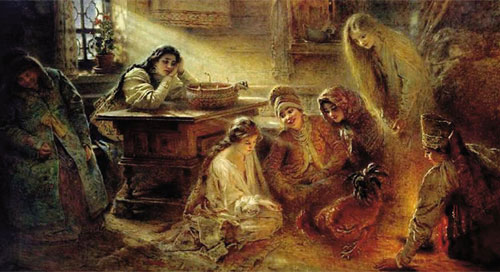
Alectryomancy (also called alectoromancy or alectromancy) is a form of divination in which the diviner observes a bird, several birds, or most preferably a white rooster or cockerel pecking at grain (such as wheat) that the diviner has scattered on the ground. The observer may place grain in the shape of letters and thus discern a divinatory revelation by noting which letters the birds peck at, or the diviner may just interpret the pattern left by the birds’ pecking in randomly scattered grain.
In ancient Rome, fhis practice was used when the sun or the moon was in Aries or Leo. A circle of letters (originally twenty-four in number, since j, v are the same as i, u) was traced on the ground and laid out with some sort of grain placed on each letter. Next a rooster, usually a white one, was allowed to peck at the grains, thus selecting letters to create a divinatory message or sign. The chosen letters could be either read in order of selection, or rearranged to make an anagram. Sometimes readers got 2 or 3 letters and interpreted them.
In another version, the observer tethers the bird in the center of a circle, around the perimeter of which is marked the alphabet, with a piece of grain at each letter. For each grain the bird pecks, the observer writes down the letter which that grain represents. The observer also replaces each grain as the bird eats it, so that letters may be repeated. The sequence of letters recorded will presumably contain a message.
In Africa, a black hen or a gamecock is used, which within such a religious practice and belief “to foresee, to be inspired by a god” may be accurately referred to as a sacred cock or sacred vessel. An African diviner sprinkles grain on the ground and when the bird has finished eating, the seer interprets the designs or patterns left on the ground.
Another method of alectormancy, used less often, was based on reciting letters of the alphabet noting those at which a cock crows. Letters were recorded in sequence and then these letters were interpreted as the answer to the question chosen by seers.
A rare, obsolete meaning of alectormancy is “a divination by a cock-stone”. A cock-stone or alectoria was “a christall coloured stone (as big as a beane) found in the gyzerne, or maw of some cockes” (Cotgrave). These stones, purportedly found in a roosters crop, were known to the Romans and were imputed with magical powers. Apparently, they were used for some sort of lithomantic divination, though the details of this use are not to be found.
Alectormancy was also used in Ancient Rome to identify thieves.
Source: Wikipedia
Nixole: Taromancy – What is it?
Debbie: Reading Candle Wax
Bridget Grimes: 310112_svyatki2_500
Mari: Reading Candle Wax
Ali: Notarikon

